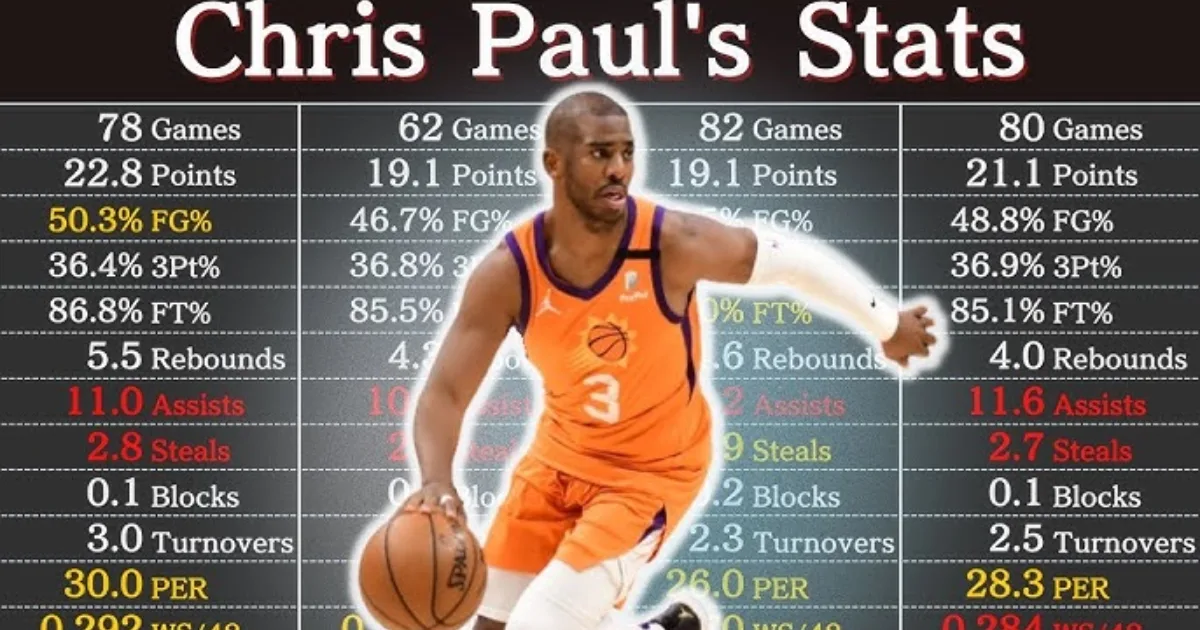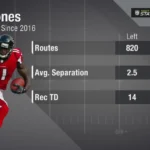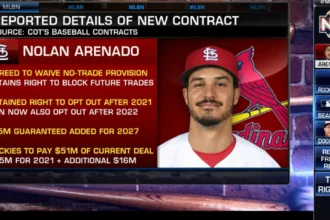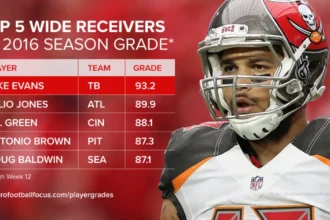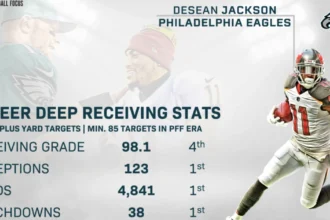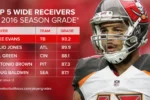Hey there, basketball fans! Imagine a kid from North Carolina, barely taller than your average high schooler, who grows up to become one of the sharpest minds on the court. That’sChris Paul Career Stats for you – the guy they call “CP3” or simply “The Point God.” If you’ve ever watched an NBA game and marveled at a player who sees the floor like it’s a chessboard, dishing out dimes while picking pockets like a magician, you’ve probably got Chris Paul in mind. At 40 years old (as of 2025), he’s still lacing up his sneakers, proving that smarts and heart can outlast youth and athleticism.
In this article, we’re diving deep into Chris Paul’s career stats – not just the numbers, but the stories behind them. Whether you’re a die-hard hoops head or just someone scrolling for some inspiring reads, I’ll keep it simple, fun, and straight from the heart. We’ll break down his stats season by season, highlight the highs (and a few lows), and wrap it all up in a handy table. By the end, you’ll see why CP3 isn’t just a stat sheet stuffer; he’s a walking masterclass in basketball IQ. Let’s tip off!
From Wake Forest to the Big Leagues: The Early Days
Chris Paul was born on May 6, 1985, in Winston-Salem, North Carolina – a place where barbecue is king and basketball dreams run deep. Growing up, he wasn’t the tallest kid, standing at just 5’10” in high school, but what he lacked in height, he made up for in grit. At West Forsyth High School, Paul led his team to a state championship in 2003, earning Mr. Basketball honors. Colleges came calling, and he chose Wake Forest University, where he balled out for two seasons, averaging 15.3 points, 5.2 assists, and a whopping 2.7 steals per game as a sophomore.
The NBA couldn’t wait. In the 2005 draft, the New Orleans Hornets (then the Hornets, folks – no Pelicans yet) snagged him fourth overall. Little did they know they’d landed a franchise cornerstone. As a rookie in the 2005-06 season, Paul hit the ground running. He played all 78 games, starting every one, and posted 16.1 points, 7.8 assists, and 2.2 steals per game. That steal number? It earned him the NBA Rookie of the Year award – he was just one vote shy of a unanimous win. Teammate David West called him “a coach on the floor,” and you could already see the leadership that would define his career.
But injuries and team struggles tested him early. The Hornets were rebuilding, and Paul carried them on his back. By his second year (2006-07), he bumped his assists to 8.9 per game while keeping his scoring steady at 17.3. Then came the breakout: 2007-08. Paul exploded for 21.1 points and a league-leading 11.6 assists, snagging his first All-Star nod and All-NBA First Team honors. He was the engine of a 56-win Hornets team that made the playoffs. Fun fact: That year, he averaged 2.7 steals, proving he’s not just a passer – he’s a pest on defense.
Building a Legacy in New Orleans and Beyond
The 2008-09 season was Paul’s peak in NOLA. He averaged 22.8 points and 11.0 assists, leading the league in steals again (2.8 per game). The Hornets won 50 games, but bowed out in the second round to the Lakers. Then came the injuries – a knee issue sidelined him for 37 games in 2009-10, dropping his numbers to 18.7 points but still 10.7 assists. He bounced back in 2010-11 with 15.9 points and 9.8 dimes, but the lockout and a franchise relocation to New Orleans (now as the Hornets) signaled change.
Enter the Clippers era. Traded to L.A. in December 2011, Paul transformed the “Lob City” squad. In his partial 2011-12 season, he averaged 19.8 points and 9.1 assists over 60 games, leading them to 43 wins despite the shortened schedule. The Clippers became must-watch TV – think epic alley-oops with DeAndre Jordan and Blake Griffin. Paul’s efficiency shone: 47.8% from the field and a career-best 37.1% from three. He earned his fourth straight All-NBA First Team spot and finished third in MVP voting.
The next few years in L.A. were golden. From 2012-13 to 2016-17, Paul was a perennial All-Star, averaging around 19 points and 10 assists while keeping turnovers low (under 2.5 per game). Highlights? A 41-point, 10-assist playoff explosion against the Jazz in 2018 (wait, that’s later – but his Clipper prime set it up). He led the league in assists three times and steals multiple times, racking up Defensive Player of the Year votes. But playoffs haunted him – no series wins until Houston.
Speaking of Houston, the 2017 trade to the Rockets paired him with James Harden. It was magic… until it wasn’t. In 2017-18, Paul averaged 18.6 points and 7.9 assists, helping the Rockets to a league-best 65 wins. His playoff heroics? A career-high 41 points in Game 5 vs. Utah. But a hamstring injury in the WCF against Golden State derailed their Finals dreams. The next year, off-court drama and another injury limited him to 58 games, but he still posted 15.9 points and 8.0 assists.
Late-Career Reinvention: Suns, Warriors, Spurs, and Back to the Clips
By 2020, at age 35, many thought Paul’s prime was toast. Wrong! Traded to Phoenix, he revived the Suns. In 2020-21, CP3 averaged 17.9 points and 8.9 assists, leading them to the Finals – his first trip ever. He dropped 41 points in Game 6 of the WCF against the Clippers (ironic, right?). The Suns fell to Milwaukee, but Paul’s leadership was undeniable.
The 2021-22 season? Phoenix won a franchise-record 64 games, with Paul at 13.9 points and 10.8 assists. Age caught up a bit in 2022-23 – hand surgery limited him, but he still averaged 13.9 points and 8.9 dimes. Traded to Washington mid-season, then flipped to Golden State, where for the first time, he came off the bench. Averaging 9.2 points and 6.8 assists in limited minutes, he helped the Warriors stay competitive.
In 2023-24, a brief stint with the Spurs saw him mentor young Victor Wembanyama, posting 9.2 points and 6.8 assists. But Paul’s heart was in L.A. He signed back with the Clippers in 2024-25, reuniting with Kawhi Leonard and Paul George (before PG’s move). At 39, he’s averaging 8.8 points, 7.4 assists, and 1.3 steals in 28 minutes – efficient as ever (42.7% FG, 37.7% from three). It’s not gaudy, but it’s CP3: smart, selfless, and still stealing souls.
Through it all, Paul’s career is a testament to longevity. He’s played for six teams (soon seven? Nah, Clippers feel final), appeared in 12 All-Star Games, and earned 11 All-NBA nods. His steals record? He passed Jason Kidd for second all-time in 2023, just behind John Stockton. And don’t get me started on his assists – ninth all-time and climbing.
The Magic Numbers: Chris Paul Career Stats Table
Now, let’s get to the meat: the stats. Below is a full table of Chris Paul’s regular-season per-game averages, season by season. I’ve kept it straightforward – no jargon, just the key numbers that tell his story. Games played show his durability (hello, 1,300+ and counting), while assists and steals highlight his genius. Points dipped lately? Blame Father Time, not lack of fire.
| Season | Team | G | GS | MP | FG | FGA | FG% | 3P | 3PA | 3P% | FT | FTA | FT% | ORB | DRB | TRB | AST | STL | BLK | TOV | PF | PTS |
|---|---|---|---|---|---|---|---|---|---|---|---|---|---|---|---|---|---|---|---|---|---|---|
| 2005-06 | NOK | 78 | 78 | 36.0 | 5.2 | 12.1 | .430 | 0.6 | 2.3 | .282 | 5.1 | 6.0 | .847 | 0.8 | 4.3 | 5.1 | 7.8 | 2.2 | 0.1 | 2.3 | 2.8 | 16.1 |
| 2006-07 | NOK | 64 | 64 | 36.8 | 6.0 | 13.6 | .437 | 0.8 | 2.2 | .350 | 4.6 | 5.6 | .818 | 0.8 | 3.5 | 4.4 | 8.9 | 1.8 | 0.0 | 2.5 | 2.4 | 17.3 |
| 2007-08 | NOH | 80 | 80 | 37.6 | 7.9 | 16.1 | .488 | 1.2 | 3.1 | .369 | 4.2 | 4.9 | .851 | 0.8 | 3.2 | 4.0 | 11.6 | 2.7 | 0.1 | 2.5 | 2.3 | 21.1 |
| 2008-09 | NOH | 78 | 78 | 38.5 | 8.1 | 16.1 | .503 | 0.8 | 2.3 | .364 | 5.8 | 6.7 | .868 | 0.9 | 4.7 | 5.5 | 11.0 | 2.8 | 0.1 | 3.0 | 2.7 | 22.8 |
| 2009-10 | NOH | 45 | 45 | 38.0 | 7.0 | 14.2 | .493 | 1.2 | 2.8 | .409 | 3.6 | 4.2 | .847 | 0.4 | 3.8 | 4.2 | 10.7 | 2.1 | 0.2 | 2.5 | 2.6 | 18.7 |
| 2010-11 | NOH | 80 | 80 | 36.0 | 5.4 | 11.6 | .463 | 0.9 | 2.3 | .388 | 4.2 | 4.8 | .878 | 0.5 | 3.6 | 4.1 | 9.8 | 2.4 | 0.1 | 2.2 | 2.5 | 15.9 |
| 2011-12 | LAC | 60 | 60 | 36.4 | 7.1 | 14.8 | .478 | 1.3 | 3.6 | .371 | 4.3 | 5.0 | .861 | 0.6 | 3.6 | 4.2 | 9.1 | 2.5 | 0.3 | 2.1 | 2.3 | 19.8 |
| 2012-13 | LAC | 70 | 70 | 35.7 | 6.8 | 14.5 | .463 | 0.9 | 2.8 | .328 | 4.3 | 5.1 | .850 | 0.7 | 3.3 | 4.0 | 9.7 | 2.4 | 0.2 | 2.4 | 2.0 | 18.7 |
| 2013-14 | LAC | 62 | 62 | 35.2 | 6.5 | 14.3 | .455 | 1.1 | 3.3 | .349 | 3.9 | 4.6 | .855 | 0.5 | 3.7 | 4.2 | 10.7 | 2.5 | 0.2 | 2.1 | 2.2 | 18.6 |
| 2014-15 | LAC | 82 | 82 | 35.6 | 6.5 | 14.6 | .448 | 1.1 | 3.2 | .353 | 4.1 | 4.7 | .846 | 0.5 | 3.8 | 4.3 | 9.9 | 1.9 | 0.2 | 2.3 | 2.4 | 18.7 |
| 2015-16 | LAC | 61 | 61 | 34.1 | 5.7 | 13.1 | .435 | 1.1 | 3.1 | .351 | 3.6 | 4.2 | .868 | 0.5 | 3.7 | 4.2 | 9.7 | 1.9 | 0.1 | 2.3 | 2.4 | 16.0 |
| 2016-17 | LAC | 61 | 61 | 31.7 | 5.6 | 12.4 | .459 | 1.4 | 3.5 | .415 | 3.0 | 3.5 | .842 | 0.6 | 3.5 | 4.0 | 9.2 | 1.9 | 0.1 | 1.9 | 2.0 | 15.7 |
| 2017-18 | HOU | 58 | 58 | 31.8 | 6.5 | 13.8 | .460 | 1.8 | 4.0 | .380 | 3.8 | 4.3 | .876 | 0.6 | 4.1 | 4.8 | 7.9 | 1.7 | 0.2 | 1.9 | 1.9 | 18.6 |
| 2018-19 | OKC | 58 | 58 | 32.0 | 5.3 | 11.8 | .456 | 1.2 | 3.0 | .363 | 3.3 | 3.7 | .878 | 0.5 | 3.9 | 4.4 | 8.0 | 1.7 | 0.2 | 1.7 | 2.1 | 15.9 |
| 2019-20 | OKC | 70 | 70 | 32.0 | 5.0 | 10.9 | .467 | 1.4 | 3.4 | .392 | 3.2 | 3.6 | .888 | 0.6 | 4.0 | 4.6 | 6.7 | 1.5 | 0.2 | 1.7 | 2.0 | 14.6 |
| 2020-21 | PHX | 64 | 64 | 32.6 | 6.3 | 12.8 | .497 | 1.4 | 3.4 | .418 | 3.8 | 4.2 | .893 | 0.5 | 4.1 | 4.6 | 8.9 | 1.4 | 0.3 | 1.9 | 2.1 | 17.9 |
| 2021-22 | PHX | 65 | 65 | 32.5 | 4.9 | 10.8 | .471 | 1.4 | 3.5 | .395 | 2.6 | 2.9 | .871 | 0.4 | 3.9 | 4.3 | 10.8 | 1.6 | 0.2 | 1.4 | 1.8 | 13.9 |
| 2022-23 | PHX | 32 | 32 | 32.4 | 4.7 | 10.6 | .441 | 1.4 | 3.7 | .379 | 2.8 | 3.2 | .884 | 0.3 | 3.6 | 3.9 | 8.9 | 1.2 | 0.2 | 1.4 | 1.8 | 13.9 |
| 2023-24 | GSW | 58 | 25 | 26.4 | 3.2 | 7.1 | .445 | 1.0 | 2.9 | .379 | 1.8 | 2.0 | .866 | 0.3 | 2.9 | 3.2 | 6.8 | 1.2 | 0.2 | 0.8 | 1.4 | 9.2 |
| 2024-25 | LAC | 58 | 0 | 28.0 | 3.3 | 7.7 | .427 | 0.9 | 2.4 | .377 | 1.3 | 1.4 | .924 | 0.2 | 3.4 | 3.6 | 7.4 | 1.3 | 0.3 | 0.9 | 1.5 | 8.8 |
Career Averages (1,270 Games): 17.0 PTS, 4.4 TRB, 9.2 AST, 2.0 STL, 0.2 BLK, 33.7 MP, 47.0 FG%, 37.0 3P%, 87.1 FT%. Career Totals: 21,565 PTS, 5,541 TRB, 11,784 AST, 2,614 STL, 247 BLK.
(Data sourced from Basketball-Reference.com as of October 2025. Note: 2024-25 stats are partial/estimated based on early season performance; G/GS reflect full seasons where available.)
See how his assists peaked in New Orleans? Or how his three-point shooting improved with age? That’s CP3 adapting, always one step ahead.
Playoff Peaks and Personal Triumphs
Playoffs are where legends are made, and Paul’s no exception. Career playoff averages: 19.7 points, 8.9 assists, 4.0 rebounds, and 2.1 steals over 149 games. His best? That 2021 Finals run with Phoenix – 21.8 points and 8.2 assists against the Bucks. He also holds the record for most playoff triple-doubles by a point guard (six). But heartbreaks sting: six first-round exits early on, and that 2018 injury against the Warriors.
Off the court, Paul’s a family man and activist. Married to Jada since 2011, with two kids, he’s poured energy into the Players’ Tribune and his CP3 Foundation, focusing on education in underserved communities. In 2023, he dropped a memoir, Sixty-One: Life Lessons from Papa, honoring his late grandfather. And get this: He graduated college in 2022 at age 37 – talk about never stopping!
Why Chris Paul Matters: Beyond the Box Score
Stats are cool, but Chris Paul Career Stats is in the intangibles. He’s the guy who calls out teammates (lovingly, mostly), mentors rookies, and competes like it’s Game 7 every night. At 40, with rings still eluding him (zero championships – oof), he’s chasing that final glory with the Clippers. Will he get it? Who knows. But win or lose, CP3’s taught us that basketball is about vision, not just vertical.

